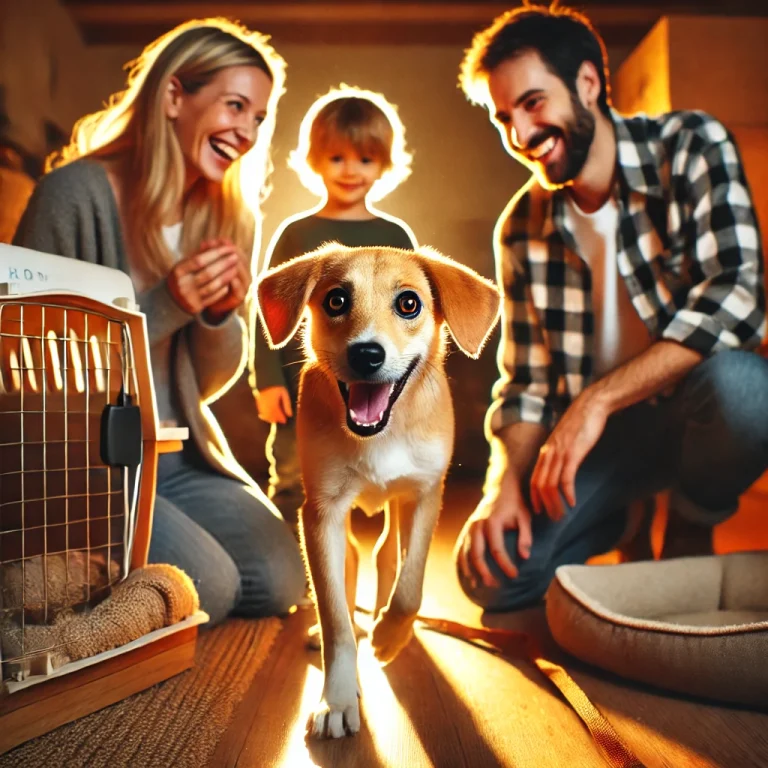Integrating Your New Dog into the Family: Safe Tips for Kids and Other Pets
Bringing a new dog into your home is an exciting moment—visions of your kids laughing in the backyard with their new furry friend or your pets snuggling together on the couch. But let’s be real: sometimes, that dream turns into chaos. Maybe your new pup is jumping all over the kids, or your cat’s giving the stink-eye from the top of the fridge. At Off Leash K9 Training, we’ve helped thousands of families across Georgia (and beyond) turn those rocky starts into lifelong bonds. With our proven methods, you can create a harmonious home where your dog, kids, and other pets thrive together. Let’s break it down with actionable steps, practical tips, and a few heartwarming stories to show you what’s possible.
Why Family Integration Matters
A poorly integrated dog can lead to stress, accidents, or even injuries—especially with kids or other pets involved. Done right, though, it builds a foundation for trust, safety, and joy. Our approach at Off Leash K9 Training focuses on balanced training: clear boundaries, balanced reinforcement, and the kind of off-leash control “as dogs are mostly off leash in the home!” that gives you peace of mind. Whether you’ve got a rambunctious puppy, a rescue with a past, or a high-energy breed, these strategies work for any dog, any family.
Part 1: Integrating Your Dog with Kids
Kids and dogs are a match made in heaven—when it’s done right. The key is teaching both your children and your dog how to interact safely and respectfully. Here’s how to make it happen:
1. Always Supervise Early Interactions
Never leave young kids alone with a new dog, no matter how gentle the pup seems. Kids move unpredictably—squealing, running, or grabbing—and dogs can misinterpret that as play or a threat. Supervision lets you step in if things get too wild. For older kids (say, 8 and up), involve them in the training process to build confidence and responsibility.
Pro Tip: Set up a “safe zone” for your dog, like a crate or a quiet corner with a bed, where they can retreat if the kids’ energy gets overwhelming. Teach your children to respect this space.
2. Teach Kids How to Interact
Kids need to learn dog etiquette early. No tail-pulling, no roughhousing, and definitely no chasing. Turn it into a fun learning experience:
-
Practice Gentle Petting: Show kids how to stroke the dog’s back or chest (avoiding the face or ears at first). Reward the dog with treats for staying calm.
-
Involve Them in Training: Have kids give simple commands like “sit” or “stay,” rewarding the dog with a treat when they obey. This builds mutual respect and makes kids feel like part of the team.
-
Set Boundaries: Explain that food time or rest time is dog-only time. No bothering the pup when they’re eating or sleeping.
3. Master Basic Obedience for Safety
Basic commands like “sit,” “stay,” “leave it,” and “come” aren’t just for show—they’re critical for safety. A dog that sits on command won’t bowl over your toddler during a burst of excitement. A solid “leave it” stops them from grabbing a toy out of a kid’s hand. At Off Leash K9, we use positive reinforcement combined with e-collar training for off-leash reliability. Imagine your kids playing in the yard, calling the dog back with a single word, and watching them obey instantly. That’s the freedom our training delivers.
Real-Life Example: We worked with a family in Georgia whose Golden Retriever puppy was a whirlwind around their 5- and 7-year-old boys. The kids were scared, and the dog was feeding off their energy. After two weeks of our program—focusing on “place” (teaching the dog to stay on a designated spot) and recall—the dog was lying calmly while the kids built pillow forts around him. The parents said it felt like a miracle, but it was just consistent training and clear rules.
Part 2: Integrating Your Dog with Other Pets
Introducing a new dog to existing pets can feel like navigating a minefield. Cats may hiss, other dogs may posture, and smaller animals like hamsters or rabbits can trigger a dog’s prey drive. The goal is a peaceful household where everyone coexists (and maybe even cuddles). Here’s how to get there:
1. Start with Scent Familiarization
Before any face-to-face meetings, let your new dog get used to the other pet’s scent. Swap bedding or toys between the animals so they can sniff without stress. For example, let your dog smell your cat’s favorite blanket while rewarding calm behavior with treats. This builds a positive association before they even meet.
Pro Tip: Keep your new dog in a separate room or crate during the first few days, allowing scent swapping to happen gradually while everyone adjusts.
2. Controlled First Meetings
First introductions should be calm and controlled:
-
Neutral Territory: Choose a space neither animal claims, like a backyard or a park. For cats, a large room with plenty of high perches works.
-
Leash Up: Keep the new dog on a leash to prevent chasing or lunging. If you’re introducing two dogs, have a second person handle the resident dog’s leash.
-
Reward Calmness: Give treats and praise for relaxed behavior, like sitting or ignoring the other pet. If anyone gets tense—barking, hissing, or raised hackles—calmly separate them and try again later.
3. Build Up to Off-Leash Freedom
Once everyone’s comfortable, you can work toward off-leash interactions. Our e-collar training is a game-changer here. It allows you to correct unwanted behaviors (like chasing or rough play) instantly, even from across the room or yard. Gradually increase the time they spend together, always rewarding harmony with treats or praise.
Pro Tip: For cats, ensure they have escape routes—cat trees, shelves, or baby gates the dog can’t jump. For small animals like hamsters, keep their enclosures in a dog-free zone until you’re confident the dog’s prey drive is under control.
Real-Life Example: A client in Atlanta had a senior cat who ruled the house and a new rescue dog with zero chill. The cat was stressed, hiding all day, and the dog was obsessed with chasing her. We used scent familiarization, controlled intros, and e-collar corrections to stop the chasing. Within a month, we got a video of the cat grooming the dog’s ears while they napped together. Moments like that make all the effort worth it.
Common Pitfalls to Avoid
-
Rushing the Process: Forcing interactions too soon can lead to fights or fear. Take it at the animals’ pace.
-
Ignoring Body Language: Watch for signs of stress—tail tucked, ears back, or growling in dogs; hissing or swatting in cats. These are cues to slow down.
-
Skipping Training: Basic obedience is non-negotiable. A dog that doesn’t listen can’t be trusted around kids or other pets.
The Emotional Payoff
Integrating a dog into your family isn’t just about avoiding chaos—it’s about creating those heart-melting moments. Picture your kids giggling as they toss a ball for a well-behaved dog, or your cat and pup curled up together after a long day. It’s about building a home where everyone feels safe, loved, and connected. Consistency, patience, and the right training make it possible.
Take the Next Step with Off Leash K9 Training
Ready to make your household a haven for your dog, kids, and other pets? At Off Leash K9 Training, our programs are tailored to your unique situation, whether you’re in Georgia or across the country. From basic obedience to advanced off-leash control, we’ve got you covered. Book a free consultation today at offleashgeorgia.com or give us a call. Let’s create those unforgettable family moments together!







